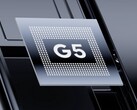Verdict: AI-first Android 16 poster child with familiar compromises
Google has pretty much nailed the fundamentals with the Pixel 10 Pro XL. You get a solid aluminum build with equitable weight distribution and a standout Moonstone color that feels great to hold.
Welcome additions this time include Pixelsnap Qi 2.2 25 W wireless charging, better speakers, faster networking, and slightly improved cameras, but they do not really warrant an immediate upgrade from the Pixel 9 Pro XL or even the Pixel 8 Pro.
The Tensor G5 chip together with the PowerVR DXT-48-1536 GPU trail significantly behind other 2025 flagship SoCs in raw performance.
The LTPO OLED's 240 Hz PWM at minimum brightness is concerning as well, and the 480 Hz option should have ideally been the default.
That being said, the Pixel 10 Pro XL feels snappy and highly responsive in everyday tasks with hardly any hiccup. But potential buyers at this price aren't just looking to use this phone for everyday tasks. They want something more.
Google offers that in the form of AI. Make no mistake, this device is AI first and phone later. New AI features like Magic Cue, Camera Coach, and Pro Res 100x zoom have questionable daily utility although they work very well when they do.
If you are entrenched within Google's first-party ecosystem, prefer clean Android in general over iOS, desire seamless Gemini integration, have been mulling an upgrade from a Pixel 7 Pro or older, and benchmarks mean nothing to you, the Pixel 10 Pro XL is an easy recommend.
Platform-agnostic users and those who lay emphasis on a smartphone's worth relative to its spec sheet are better served by competing devices like the Samsung Galaxy S25 Ultra, OnePlus 13, or even Apple's latest iPhone 17 Pro Max.
Pros
Cons
Price and Availability
The Google Pixel 10 Pro XL is available across retailers worldwide and on Amazon US starting at $1,199 for the 256 GB variant.
In India, the Pixel 10 Pro XL is only offered with 256 GB storage and can be bought directly from the Google India Store for ₹1,24,999.
Table of Contents
- Verdict: AI-first Android 16 poster child with familiar compromises
- Specifications
- Build: IP68 aluminum construction with Gorilla Glass Victus 2
- Hardware: NFC, UWB, Qi 2.2 and USB 3.2 onboard
- Software: Android 16 QPR1 with 7 years of Pixel Drops and lots of AI
- Communication and GNSS: Fast Wi-Fi throughput and accurate on-road navigation
- Telephony and Call quality: DSDS supported, US gets eSIM-only
- Cameras: Same shooters as the 9 Pro XL, now with a contentious Pro Res 100x zoom
- Accessories and Warranty: No adapter included, US customers get Pixel Care+
- Input devices and Operation: Excellent haptics
- Display: 24-bit Super Actua panel with optional 480 Hz PWM
- Performance: Middling Tensor G5 numbers that are further hamstrung by the GPU
- Gaming: 60 fps possible in low to medium settings
- Emissions: Low heat output with minimal throttling
- Energy consumption: Move to TSMC 3 nm brings immediate efficiency gains
- Notebookcheck's impressions of the Google Pixel 10 Pro XL
- Potential competitors in comparison
Google introduced its Pixel smartphone lineup in 2016, succeeding the Nexus phones made by third-party OEMs. Fast-forward nine years, and we arrive in the Pixel 10 generation led by the Pixel 10 Pro XL.
Externally, the Pixel 10 Pro XL continues to retain the Pixel 9 Pro XL's much vaunted design with minor, often imperceivable changes.
The big changes are on the inside with the new Tensor G5 SoC, UFS 4.0 storage, a marginally larger battery, and the introduction of Google's own MagSafe-esque system, Pixelsnap.
Specifications
Build: IP68 aluminum construction with Gorilla Glass Victus 2
The Pixel 10 Pro XL comes in Moonstone (our unit), Jade, Porcelain, and Obsidian color options. Apart from the colors, put side-by-side, there is little to differentiate the 10 Pro XL from its predecessor save for a slightly enlarged camera visor and the Google logo.
That being said, the 10 Pro XL now weighs 232 g — a good 11 g heavier than the 9 Pro XL.
The weight is well-distributed, and the smartphone doesn't feel top-heavy despite sporting the triple camera array.
Just like the Pixel 9 Pro XL, the Pixel 10 Pro XL continues to use a spacecraft-grade polished aluminum frame together with Corning Gorilla Victus 2 screen protection.
Unfortunately, Google has not transitioned to Gorilla Armor 2 like the Samsung Galaxy S25 Ultra.
The device comes with an IP68 rating for protection from dust and water ingress, but it is not dust or waterproof.
Hardware: NFC, UWB, Qi 2.2 and USB 3.2 onboard
The Pixel 10 Pro XL is the only Pixel 10 phone to support Pixelsnap Qi 2.2 wireless charging up to 25 W. Both the Pixel 10 Pro models also come with an ultra-wideband chip (UWB) for accurate ranging.
Google has fixed a minor annoyance with the 9 Pro XL in this generation. The loudspeaker is now positioned to the right of the USB-C port, so it doesn't get blocked when you hold the phone sideways.
There is no IR blaster or a microSD card reader, but you get NFC and USB 3.2 Gen1 connectivity.
The SIM tray accepts one nano SIM card while the second SIM is an eSIM. In the US, the Pixel 10 series is eSIM-only and comes with 5G mmWave support on bands 258, 260, and 261.
Software: Android 16 QPR1 with 7 years of Pixel Drops and lots of AI
The Google Pixel 10 series ships with Pixel UI layered on top of Android 16. The phone gets a day 1 update to Android 16 QPR1 that brings Material 3 Expressive design and a Samsung DeX-like desktop mode (currently in Developer preview) when the phone is connected to external displays via USB-C.
Google maintains its commitment to offer seven years of OS, security, and Pixel Drop updates for the Pixel 10 Pro XL.
AI remains the Pixel 10 Pro XL's cornerstone. A free year of Google AI Pro with Imagen 4 and Veo 3 comes bundled with every Pixel 10 purchase.
New AI features this year include Magic Cue for contextual information (though performance has been inconsistent and does not work with Google Workspace yet), Camera Coach, Pro Res 100x zoom on the Pro models, Conversational Editing in Google Photos, real-time on-device natural Voice Translate during calls, Take a Message for missed or declined call transcription, and the ability to transform humming into music in the Recorder app.
Google also bundles a Journal app similar to its iOS namesake and NotebookLM, an AI-powered notes assistant.
Not all AI features are available globally, though. For instance, Conversational Editing in Google Photos, and Take a Message are not yet available in India at the time of writing.
Sustainability
The Pixel 10 Pro XL's packaging is 100% plastic-free. Google says that 100% recycled materials are used in the housing, battery, magnets, haptic engine, logic boards, and PCBs.
10 of the 13 plastic components used are made of at least 53% recycled plastic, according to the company.
Communication and GNSS: Fast Wi-Fi throughput and accurate on-road navigation
The Pixel 10 Pro XL supports the latest Wi-Fi 7 and Bluetooth 6 connectivity standards.
Wi-Fi transmit throughput exceeded 1.8 Gbps while receive speeds are consistently above 1.6 Gbps in both the 5 GHz and 6 GHz 6E bands when tested with our reference Asus ROG Rapture GT-AXE11000 router at a 1 m distance from the phone.
No major throttling during Wi-Fi transmission was observed.
| Networking / iperf3 transmit AXE11000 | |
| Google Pixel 10 Pro XL (iperf 3.1.3) | |
| Samsung Galaxy S25 Ultra (iperf 3.1.3) | |
| Average Wi-Fi 7 (556 - 1828, n=62) | |
| Xiaomi 15 Ultra (iperf 3.1.3) | |
| Google Pixel 9 Pro XL (iperf 3.1.3) | |
| Vivo X200 Pro (iperf 3.1.3) | |
| Apple iPhone 16 Pro Max (iperf 3.1.3) | |
| OnePlus 13 (iperf 3.1.3) | |
| Average of class Smartphone (49.8 - 1828, n=177, last 2 years) | |
| Networking / iperf3 receive AXE11000 | |
| Google Pixel 10 Pro XL (iperf 3.1.3) | |
| Samsung Galaxy S25 Ultra (iperf 3.1.3) | |
| Average Wi-Fi 7 (565 - 1875, n=62) | |
| Vivo X200 Pro (iperf 3.1.3) | |
| Google Pixel 9 Pro XL (iperf 3.1.3) | |
| Xiaomi 15 Ultra (iperf 3.1.3) | |
| OnePlus 13 (iperf 3.1.3) | |
| Apple iPhone 16 Pro Max (iperf 3.1.3) | |
| Average of class Smartphone (52 - 1721, n=177, last 2 years) | |
| Networking / iperf3 transmit AXE11000 6GHz | |
| Google Pixel 10 Pro XL (iperf 3.1.3) | |
| Google Pixel 9 Pro XL (iperf 3.1.3) | |
| OnePlus 13 (iperf 3.1.3) | |
| Samsung Galaxy S25 Ultra (iperf 3.1.3) | |
| Xiaomi 15 Ultra (iperf 3.1.3) | |
| Average Wi-Fi 7 (563 - 1945, n=48) | |
| Apple iPhone 16 Pro Max (iperf 3.1.3) | |
| Average of class Smartphone (508 - 1945, n=94, last 2 years) | |
| Networking / iperf3 receive AXE11000 6GHz | |
| Google Pixel 9 Pro XL (iperf 3.1.3) | |
| Google Pixel 10 Pro XL (iperf 3.1.3) | |
| Xiaomi 15 Ultra (iperf 3.1.3) | |
| Average Wi-Fi 7 (451 - 1864, n=48) | |
| Samsung Galaxy S25 Ultra (iperf 3.1.3) | |
| OnePlus 13 (iperf 3.1.3) | |
| Average of class Smartphone (451 - 1870, n=94, last 2 years) | |
| Apple iPhone 16 Pro Max (iperf 3.1.3) | |
The Pixel 10 Pro XL supports L1+L5 dual-band GPS. Other supported global navigation satellite systems (GNSS) include GLONASS (L1/G1), Galileo (E1+E5a), BeiDou (B1I+B1C+B2a), QZSS (L1+L5) and NavIC (IRNSS L5).
Satellite-based augmentation systems (SBAS) like EGNOS and GAGAN are not supported.
While the smartphone is able to catch GNSS signals outdoors with high accuracy, it finds it difficult to latch onto a satellite signal indoors.
The Pixel 10 Pro XL negotiated corners and turns more accurately during a short drive compared to the Apple iPhone 16 Pro.
However, the iPhone 16 Pro demonstrated more reliable navigation in a dense housing campus where the 10 Pro XL cut through buildings than following the actual road.
Telephony and Call quality: DSDS supported, US gets eSIM-only
The Pixel 10 Pro XL supports all major global 4G LTE and 5G Sub 6 GHz bands, with US models (GUL82) adding 5G mmWave but dropping the physical SIM slot. Dual-SIM operation uses one nano-SIM plus eSIM in DSDS mode.
Google Dialer handles calls and manages contacts and now allows iOS-style calling cards, though call recording remains unsupported. The call screen integrates Magic Cue and Assistant call-taking features.
Call quality on the Jio True5G network is clear and loud enough on both the speakerphone and the earpiece, with no perceivable distortions even at high volume. We did notice a very minor delay in switching between the loudspeaker and the earpiece during a call.
The phone can use Vo5G (VoNR) or fallback to LTE if the operator does not offer the feature.
Cameras: Same shooters as the 9 Pro XL, now with a contentious Pro Res 100x zoom
The Pixel 10 Pro XL uses identical sensors to its predecessor but gains from the Tensor G5's improved ISP.
The 42 MP autofocus selfie camera (0.7 µm pixels, f/2.2, 103° FOV) outputs 10 MP binned photos with good quality, though skin tones tend to lean on the warmer side.
Portrait shots work for social media, but the bokeh effect is more gradual and pronounced with occasional depth detection errors. Post-capture depth editing can be done via Google Photos.
The 10 Pro XL additionally allows for full 50 MP rear camera portraits, a feature unavailable on the 9 Pro XL.
The Pixel Camera app offers comprehensive controls including auto/manual lens selection, RAW capture, manual settings, and HDR/Display P3 color space support.
The 10 Pro XL supports 4K 60 fps recording on all four cameras, though enabling 10-bit HDR limits this to 30 fps.
Unlike competing flagships with native 8K 30 fps recording, the 10 Pro XL requires uploading 4K footage to the cloud for 8K upscaling — not a very intuitive process.
Like the iPhone 16 Pro, macro shots are a crop from the 48 MP ultra-wide.
Macro photos come out with decent detail and low noise.
However, these still fall short of competitors like the Vivo X200 Pro and the Xiaomi 15 Ultra that use telephoto lenses to achieve the macro effect.
Often, simply zooming with the main camera yields better close-up results.
Camera Coach
Camera Coach is Google's new AI photography assistant that analyzes scenes and suggests shooting approaches that it thinks are optimal. It provides step-by-step guidance on lens selection, framing, and composition.
While useful for getting a hang of smartphone photography fundamentals, the methodical process significantly slows capture speed, making it impractical for spontaneous moments or fast-moving subjects.
Pro Res Zoom
Pro Res Zoom is a Pixel 10 Pro exclusive feature that upscales extreme digital zoom shots (30x to 100x) using an on-device diffusion model available as optional download.
Results vary significantly by subject. Static objects, buildings, and plants perform best, while animal shots are passable with some inaccuracies.
Human subjects should be avoided entirely as the AI frequently alters facial features beyond recognition, creating fictional details.
Whether Pro Res Zoom goes antithetical to the basic premise of photography is a subject of debate.
Google, on its part, embeds C2PA Content Credentials metadata in all Pro Res Zoom photos to address transparency concerns.
The Pixel 10 Pro XL delivers subtle improvements in tonality and dynamic range over its predecessor. The 5x telephoto shows better detail retention with improved colors while still looking natural. The phone tends to avoid the added saturated look we get with the OnePlus 13.
The Samsung ISOCELL GNV primary sensor supports 12-bit capture through Dual Conversion Gain (DCG). However, you will need to use third-party camera apps to take advantage of this.
Image comparison
Choose a scene and navigate within the first image. One click changes the position on touchscreens. One click on the zoomed-in image opens the original in a new window. The first image shows the scaled photograph of the test device.
Ultra-wide 0.5xMain cameraMain camera 2x zoom5x Optical zoomLow lightIn controlled lighting, the Pixel 10 Pro XL achieves a reasonable DeltaE of 5.87 with the ColorChecker Passport and reproduces the test chart with good detail and sharpness.
At 1 lux, we observe significant color deviations with increased DeltaE of 21.89, although details in the test chart remain largely unaffected.

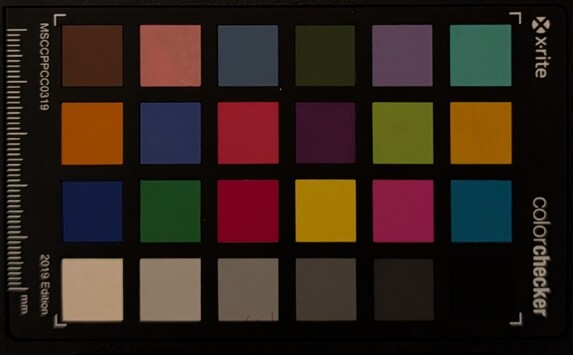
Accessories and Warranty: No adapter included, US customers get Pixel Care+
Inbox accessories include just the USB 2.0 Type-C cable, a SIM ejector tool, and the usual paperwork.
Google provides a one-year international warranty for Indian purchases. US customers can add a two-year Pixel Care+ plan for $239 (or $13 monthly for 60 months), covering unlimited accidental damage claims, extended warranty, priority support, and optional loss/theft protection.
Input devices and Operation: Excellent haptics
The Pixel 10 Pro XL's under-display ultrasonic fingerprint reader allows fast fingerprint enrolling and authentication, complemented by a less secure 2D face unlock.
Haptics feel crisp, pronounced, and add to the overall experience, especially with the Android 16 QPR1 update.
Google does not specify a touch response rate, but interactions with the smartphone were fast and highly responsive during regular use and gaming.
Gboard is the default keyboard, and it now features AI-powered Writing Tools on Pixel 9 and above devices.
Display: 24-bit Super Actua panel with optional 480 Hz PWM
The Pixel 10 Pro XL features what Google calls a "Super Actua display," which could likely be a custom BOE panel going by its BMEA-A0D-00 moniker in the ADB bug report.
This 24-bit LTPO OLED supports 1 Hz to 120 Hz variable refresh rates and a native 1344 x 2992 resolution, though it operates at 1080 x 2404 by default in a 20:9 aspect ratio.
The OLED panel boasts a virtually infinite contrast ratio and demonstrates an excellent 94% brightness uniformity.
The 10 Pro XL's display supports HDR but not Dolby Vision.
Google claims 2,200 nits in HDR mode and 3,300 nits peak brightness, but we measured 1,947 nits during HDR playback (25% window) and 2,080 nits peak with the ambient light sensor engaged.
| |||||||||||||||||||||||||
Brightness Distribution: 94 %
Center on Battery: 2016 cd/m²
Contrast: ∞:1 (Black: 0 cd/m²)
ΔE ColorChecker Calman: 0.85 | ∀{0.5-29.43 Ø4.78}
ΔE Greyscale Calman: 1 | ∀{0.09-98 Ø5}
96.2% sRGB (Calman 2D)
Gamma: 2.1
CCT: 6626 K
| Google Pixel 10 Pro XL AMOLED, 2992x1344, 6.8" | Google Pixel 9 Pro XL OLED, 2992x1344, 6.8" | Apple iPhone 16 Pro Max Super Retina XDR OLED, 2868x1320, 6.9" | Samsung Galaxy S25 Ultra Dynamic AMOLED 2X, 3120x1440, 6.9" | OnePlus 13 AMOLED, 3168x1440, 6.8" | Xiaomi 15 Ultra AMOLED, 3200x1440, 6.7" | Vivo X200 Pro OLED, 2800x1260, 6.8" | |
|---|---|---|---|---|---|---|---|
| Screen | 14% | -78% | -103% | -27% | -42% | 0% | |
| Brightness middle (cd/m²) | 2016 | 2148 7% | 1055 -48% | 1357 -33% | 1155 -43% | 1041 -48% | 1828 -9% |
| Brightness (cd/m²) | 2004 | 2050 2% | 1061 -47% | 1350 -33% | 1155 -42% | 1059 -47% | 1828 -9% |
| Brightness Distribution (%) | 94 | 86 -9% | 93 -1% | 94 0% | 98 4% | 96 2% | 94 0% |
| Black Level * (cd/m²) | |||||||
| Colorchecker dE 2000 * | 0.85 | 0.5 41% | 1.5 -76% | 3.1 -265% | 1 -18% | 1 -18% | 0.7 18% |
| Colorchecker dE 2000 max. * | 1.78 | 1.4 21% | 4.7 -164% | 4.7 -164% | 1.8 -1% | 2.7 -52% | 1.6 10% |
| Greyscale dE 2000 * | 1 | 0.8 20% | 2.3 -130% | 2.2 -120% | 1.6 -60% | 1.9 -90% | 1.1 -10% |
| Gamma | 2.1 105% | 2.23 99% | 2.21 100% | 2 110% | 2.3 96% | 2.23 99% | 2.25 98% |
| CCT | 6626 98% | 6582 99% | 6625 98% | 6391 102% | 6503 100% | 6697 97% | 6520 100% |
* ... smaller is better
Natural mode, default color temperature (Color space target: sRGB)
Adaptive mode, default color temperature (Color space target: sRGB)
Adaptive mode, default color temperature (Color space target: Display P3)
Screen Flickering / PWM (Pulse-Width Modulation)
| Screen flickering / PWM detected | 240.78 Hz Amplitude: 85.7 % | ||
The display backlight flickers at 240.78 Hz (worst case, e.g., utilizing PWM) . The frequency of 240.78 Hz is relatively low, so sensitive users will likely notice flickering and experience eyestrain at the stated brightness setting and below. In comparison: 53 % of all tested devices do not use PWM to dim the display. If PWM was detected, an average of 8108 (minimum: 5 - maximum: 343500) Hz was measured. | |||
The Pixel 10 Pro XL uses 240 Hz PWM at lower brightness levels. At levels above 10%, the panel uses DC dimming at a constant 240 Hz.
Measurement series with fixed zoom level and different brightness settings (The amplitude curve at minimum brightness looks flat, but this is due to the scaling. The info box shows the enlarged version of the amplitude at minimum brightness).
In the Accessibility settings, there a new "Adjust brightness for sensitive eyes" option that increases the PWM frequency to 480 Hz.
However, we found that the 480 Hz frequency only kicks in at brightness levels at or above 10%. The PWM at minimum brightness is still 240 Hz in this mode.
For more information, check out our primers on "Why PWM is such a headache" and "Analysis: DC Dimming vs. PWM".
Our PWM Ranking table provides an overview of measured PWM across reviewed devices.
Display Response Times
| ↔ Response Time Black to White | ||
|---|---|---|
| 5.35 ms ... rise ↗ and fall ↘ combined | ↗ 0.64 ms rise | |
| ↘ 4.71 ms fall | ||
| The screen shows very fast response rates in our tests and should be very well suited for fast-paced gaming. In comparison, all tested devices range from 0.1 (minimum) to 240 (maximum) ms. » 16 % of all devices are better. This means that the measured response time is better than the average of all tested devices (20.2 ms). | ||
| ↔ Response Time 50% Grey to 80% Grey | ||
| 0.96 ms ... rise ↗ and fall ↘ combined | ↗ 0.55 ms rise | |
| ↘ 0.41 ms fall | ||
| The screen shows very fast response rates in our tests and should be very well suited for fast-paced gaming. In comparison, all tested devices range from 0.165 (minimum) to 636 (maximum) ms. » 3 % of all devices are better. This means that the measured response time is better than the average of all tested devices (31.6 ms). | ||
Response times are on the lower side, making the 10 Pro XL amenable to fast paced gaming.
We did not detect any signs of temporal dithering.
Performance: Middling Tensor G5 numbers that are further hamstrung by the GPU
The Pixel 10 Pro XL's Tensor G5 offers modest CPU clock increases and uses TSMC's 3 nm process, delivering tangible improvements over the Tensor G4 in various benchmarks.
In Geekbench 6.4, it's 17% faster in single-core and 29% faster than the Tensor G4 in multi-core tests, with a 51% boost in AnTuTu v10.
However, the Tensor G5 cannot match up to the competition. It trails the Vivo X200 Pro's MediaTek Dimensity 9400 by 42% overall while the Snapdragon 8 Elite for Galaxy pulls ahead by 56%. Even Xiaomi's custom Xring O1 in the Xiaomi 15S Pro beats the Tensor G5 by a good 30% overall.
The Pixel 10 Pro XL uses a PowerVR D-Series DXT-48-1536 GPU with ray tracing disabled.
The phone runs an outdated 24.3 driver version with Vulkan 1.3 as of this writing, despite Imagination Technologies releasing a new 25.1 driver in August that brings Android 16, Vulkan 1.4, and broader OpenCL extension support. It is not clear if and when Google would deploy this GPU driver update in a future OTA release.
These deficits become immediately apparent in Geekbench 6.4 OpenCL and Vulkan tests, where the 10 Pro XL trails the 9 Pro XL by up to 61%.
That being said, the Pixel 10 Pro XL is still 12% faster than the 9 Pro XL in cumulative 3DMark and GFXBench tests, suggesting workload-specific performance variations.
Needless to say, the 10 Pro XL's PowerVR GPU cannot compete with the likes of an Adreno 830 or the Immortalis-G925.
Geekbench 6.5: GPU OpenCL | GPU Vulkan
3DMark: Wild Life Extreme Unlimited | Wild Life Extreme | Wild Life Unlimited Score | Steel Nomad Light Unlimited Score | Steel Nomad Light Score
GFXBench (DX / GLBenchmark) 2.7: T-Rex Onscreen | 1920x1080 T-Rex Offscreen
GFXBench 3.0: on screen Manhattan Onscreen OGL | 1920x1080 1080p Manhattan Offscreen
GFXBench 3.1: on screen Manhattan ES 3.1 Onscreen | 1920x1080 Manhattan ES 3.1 Offscreen
GFXBench: on screen Car Chase Onscreen | 1920x1080 Car Chase Offscreen | on screen Aztec Ruins High Tier Onscreen | 2560x1440 Aztec Ruins High Tier Offscreen | on screen Aztec Ruins Normal Tier Onscreen | 1920x1080 Aztec Ruins Normal Tier Offscreen | 3840x2160 4K Aztec Ruins High Tier Offscreen
| Geekbench 6.5 / GPU OpenCL | |
| Vivo X200 Pro | |
| Samsung Galaxy S25 Ultra | |
| OnePlus 13 | |
| Xiaomi 15 Ultra | |
| Xiaomi 14 Ultra | |
| Nothing Phone (3) | |
| Google Pixel 9 Pro XL (Android 16 QPR1) | |
| Google Pixel 9 Pro XL | |
| Google Pixel 10 Pro XL | |
| Geekbench 6.5 / GPU Vulkan | |
| Samsung Galaxy S25 Ultra | |
| Xiaomi 15 Ultra | |
| OnePlus 13 | |
| Vivo X200 Pro | |
| Nothing Phone (3) | |
| Xiaomi 14 Ultra | |
| Google Pixel 9 Pro XL (Android 16 QPR1) | |
| Google Pixel 9 Pro XL | |
| Google Pixel 10 Pro XL | |
| 3DMark / Steel Nomad Light Unlimited Score | |
| OnePlus 13 | |
| Vivo X200 Pro | |
| Xiaomi 15S Pro | |
| Samsung Galaxy S25 Ultra | |
| Xiaomi 15 Ultra | |
| Xiaomi 15 Ultra (1.1.1.3) | |
| Nothing Phone (3) | |
| Apple iPhone 16 Pro Max | |
| Google Pixel 9 Pro XL | |
| Google Pixel 10 Pro XL | |
| Motorola Razr 50 Ultra | |
| GFXBench (DX / GLBenchmark) 2.7 / T-Rex Onscreen | |
| Xiaomi 14 Ultra | |
| Xiaomi 15 Ultra | |
| Samsung Galaxy S25 Ultra | |
| Motorola Razr 50 Ultra | |
| Vivo X200 Pro | |
| Google Pixel 9 Pro XL | |
| Xiaomi 15S Pro | |
| Google Pixel 10 Pro XL | |
| Apple iPhone 16 Pro Max | |
| OnePlus 13 | |
| Nothing Phone (3) | |
| GFXBench (DX / GLBenchmark) 2.7 / T-Rex Offscreen | |
| Xiaomi 15S Pro | |
| Vivo X200 Pro | |
| OnePlus 13 | |
| Xiaomi 15 Ultra | |
| Samsung Galaxy S25 Ultra | |
| Nothing Phone (3) | |
| Apple iPhone 16 Pro Max | |
| Xiaomi 14 Ultra | |
| Google Pixel 9 Pro XL | |
| Google Pixel 10 Pro XL | |
| Motorola Razr 50 Ultra | |
| GFXBench / Aztec Ruins High Tier Onscreen | |
| Vivo X200 Pro | |
| Samsung Galaxy S25 Ultra | |
| Xiaomi 15S Pro | |
| Xiaomi 15 Ultra | |
| Google Pixel 10 Pro XL | |
| Motorola Razr 50 Ultra | |
| Xiaomi 14 Ultra | |
| Apple iPhone 16 Pro Max | |
| OnePlus 13 | |
| Nothing Phone (3) (Vulkan) | |
| Google Pixel 9 Pro XL | |
| GFXBench / Aztec Ruins High Tier Offscreen | |
| Vivo X200 Pro | |
| OnePlus 13 | |
| Samsung Galaxy S25 Ultra | |
| Xiaomi 15 Ultra | |
| Xiaomi 15S Pro | |
| Xiaomi 14 Ultra | |
| Nothing Phone (3) (Vulkan) | |
| Apple iPhone 16 Pro Max | |
| Motorola Razr 50 Ultra | |
| Google Pixel 10 Pro XL | |
| Google Pixel 9 Pro XL | |
| GFXBench / Aztec Ruins Normal Tier Onscreen | |
| Xiaomi 15 Ultra | |
| Samsung Galaxy S25 Ultra | |
| Vivo X200 Pro | |
| Xiaomi 15S Pro | |
| Google Pixel 10 Pro XL | |
| Xiaomi 14 Ultra | |
| Motorola Razr 50 Ultra | |
| Google Pixel 9 Pro XL | |
| Apple iPhone 16 Pro Max | |
| OnePlus 13 | |
| Nothing Phone (3) (Vulkan) | |
| GFXBench / Aztec Ruins Normal Tier Offscreen | |
| OnePlus 13 | |
| Vivo X200 Pro | |
| Xiaomi 15 Ultra | |
| Xiaomi 15S Pro | |
| Samsung Galaxy S25 Ultra | |
| Nothing Phone (3) (Vulkan) | |
| Xiaomi 14 Ultra | |
| Apple iPhone 16 Pro Max | |
| Google Pixel 10 Pro XL | |
| Motorola Razr 50 Ultra | |
| Google Pixel 9 Pro XL | |
| GFXBench / 4K Aztec Ruins High Tier Offscreen | |
| Vivo X200 Pro | |
| Samsung Galaxy S25 Ultra | |
| OnePlus 13 (vulkan) | |
| Xiaomi 15S Pro (vulkan) | |
| Xiaomi 15 Ultra | |
| Xiaomi 14 Ultra | |
| Nothing Phone (3) (vulkan) | |
| Apple iPhone 16 Pro Max | |
| Google Pixel 10 Pro XL | |
| Google Pixel 9 Pro XL | |
| Motorola Razr 50 Ultra | |
Basemark GPUScore
The 10 Pro XL posts decent performance in browser-based benchmarks, amassing good 25% gains over the 9 Pro XL.
| Jetstream 2 - 2.0 Total Score | |
| Apple iPhone 16 Pro Max (Safari Mobile 18.0.1) | |
| Samsung Galaxy S25 Ultra (Chrome 132) | |
| Google Pixel 10 Pro XL (Chrome 140) | |
| Xiaomi 15 Ultra (Chrome 132) | |
| OnePlus 13 (Chrome 131) | |
| Vivo X200 Pro | |
| Nothing Phone (3) (Chrome 138.0.7204.179) | |
| Average Google Tensor G5 (193.3 - 262, n=2) | |
| Motorola Razr 50 Ultra (Chrome 127) | |
| Google Pixel 9 Pro XL (Chrome 140) | |
| Average of class Smartphone (23.8 - 387, n=149, last 2 years) | |
| Xiaomi 14 Ultra (Chrome 123) | |
| Speedometer 2.0 - Result 2.0 | |
| Apple iPhone 16 Pro Max (Safari Mobile 18.0.1) | |
| Samsung Galaxy S25 Ultra (Chrome 132) | |
| OnePlus 13 (Chrome 140) | |
| Xiaomi 15 Ultra (Chrome 132) | |
| Nothing Phone (3) (Chrome 138.0.7204.179) | |
| Average Google Tensor G5 (343 - 345, n=2) | |
| Google Pixel 10 Pro XL (Chrome 140) | |
| Google Pixel 9 Pro XL (Chrome 140) | |
| Vivo X200 Pro (Chrome 131) | |
| Motorola Razr 50 Ultra (Chrome 127) | |
| Average of class Smartphone (15.2 - 643, n=122, last 2 years) | |
| Xiaomi 14 Ultra (Chrome 123) | |
| Speedometer 3 - Score 3.0 | |
| Apple iPhone 16 Pro Max (Safari Mobile 18.0.1) | |
| OnePlus 13 (Chrome 131) | |
| Samsung Galaxy S25 Ultra (Chrome 132) | |
| Xiaomi 15 Ultra | |
| Nothing Phone (3) (Chrome) | |
| Google Pixel 10 Pro XL (Chrome 140) | |
| Average Google Tensor G5 (20.6 - 21.3, n=2) | |
| Google Pixel 9 Pro XL (Chrome 140) | |
| Vivo X200 Pro (Chrome 131) | |
| Average of class Smartphone (1.03 - 42.8, n=124, last 2 years) | |
| Xiaomi 15S Pro | |
| Motorola Razr 50 Ultra (Chrome 127) | |
| Xiaomi 14 Ultra (Chrome 123) | |
| WebXPRT 4 - Overall | |
| Apple iPhone 16 Pro Max (Safari Mobile 18.0.1) | |
| Samsung Galaxy S25 Ultra (Chrome 132) | |
| OnePlus 13 (Chrome 131) | |
| Vivo X200 Pro (Chrome 131) | |
| Xiaomi 15S Pro (Chrome 137) | |
| Motorola Razr 50 Ultra (Chrome 127) | |
| Average Google Tensor G5 (174 - 177, n=2) | |
| Google Pixel 10 Pro XL (Chrome 140) | |
| Xiaomi 15 Ultra (Chrome 132) | |
| Xiaomi 14 Ultra (Chrome 123) | |
| Google Pixel 9 Pro XL (Chrome 140) | |
| Average of class Smartphone (27 - 306, n=145, last 2 years) | |
| Nothing Phone (3) (Chrome 138.0.7204.179) | |
| Octane V2 - Total Score | |
| Apple iPhone 16 Pro Max (Safari Mobile 18.0.1) | |
| Samsung Galaxy S25 Ultra (Chrome 132) | |
| OnePlus 13 (Chrome 131) | |
| Vivo X200 Pro (Chrome 131) | |
| Google Pixel 10 Pro XL (Chrome 140) | |
| Average Google Tensor G5 (84055 - 84281, n=2) | |
| Xiaomi 15S Pro | |
| Xiaomi 15 Ultra (Chrome 132) | |
| Nothing Phone (3) (Chrome 138.0.7204.179) | |
| Google Pixel 9 Pro XL (Chrome 129) | |
| Xiaomi 14 Ultra (Chrome 123) | |
| Average of class Smartphone (2228 - 121337, n=197, last 2 years) | |
| Motorola Razr 50 Ultra (Chrome 127) | |
| Mozilla Kraken 1.1 - Total | |
| Average of class Smartphone (257 - 28190, n=153, last 2 years) | |
| Xiaomi 14 Ultra (Chrome 123) | |
| Motorola Razr 50 Ultra (Chrome 127) | |
| Google Pixel 9 Pro XL (Chrome 140) | |
| Nothing Phone (3) (Chrome 138.0.7204.179) | |
| Xiaomi 15 Ultra (Chrome 132) | |
| Xiaomi 15S Pro (Chromne 137) | |
| Average Google Tensor G5 (470 - 473, n=2) | |
| Google Pixel 10 Pro XL (Chrome 140) | |
| OnePlus 13 (Chrome 131) | |
| Vivo X200 Pro (Chrome 131) | |
| Samsung Galaxy S25 Ultra (Chrome 132) | |
| Apple iPhone 16 Pro Max (Safari Mobile 18.0.1) | |
* ... smaller is better
Google uses UFS 4.0 flash in all Pixel 10 models with 256 GB and above storage.
The 512 GB and 1 TB Pro variants additionally get the benefit of zoned UFS (depending on the region), which should help with improved NAND longevity and potentially faster app launches.
Competitors like the OnePlus 13 and Nothing Phone (3) show much faster UFS 4.0 performance.
| Google Pixel 10 Pro XL 256 GB UFS 4.0 Flash | Google Pixel 9 Pro XL 256 GB UFS 3.1 Flash | Samsung Galaxy S25 Ultra 256 GB UFS 4.0 Flash | OnePlus 13 512 GB UFS 4.0 Flash | Nothing Phone (3) 512 GB UFS 4.0 Flash | Xiaomi 15 Ultra 512 GB UFS 4.1 Flash | Vivo X200 Pro 512 GB UFS 4.0 Flash | Average 256 GB UFS 4.0 Flash | Average of class Smartphone | |
|---|---|---|---|---|---|---|---|---|---|
| AndroBench 3-5 | 4% | 54% | 62% | 84% | 69% | 49% | 57% | 11% | |
| Sequential Read 256KB (MB/s) | 1623.16 | 1850.5 14% | 3823.28 136% | 3984.23 145% | 3720.79 129% | 4109.79 153% | 2694.85 66% | 3664 ? 126% | 2217 ? 37% |
| Sequential Write 256KB (MB/s) | 1994.93 | 1280.56 -36% | 3361.24 68% | 3684.36 85% | 3270.73 64% | 3761.19 89% | 2174.26 9% | 2701 ? 35% | 1840 ? -8% |
| Random Read 4KB (MB/s) | 259.39 | 310.88 20% | 287.85 11% | 301.29 16% | 438.57 69% | 312.69 21% | 317.29 22% | 381 ? 47% | 294 ? 13% |
| Random Write 4KB (MB/s) | 333.69 | 398.27 19% | 331.61 -1% | 344.63 3% | 585.11 75% | 379.29 14% | 658.43 97% | 405 ? 21% | 334 ? 0% |
| Google Pixel 10 Pro XL 256 GB UFS 4.0 Flash | Google Pixel 9 Pro XL 256 GB UFS 3.1 Flash | OnePlus 13 512 GB UFS 4.0 Flash | Nothing Phone (3) 512 GB UFS 4.0 Flash | Xiaomi 15 Ultra 512 GB UFS 4.1 Flash | Vivo X200 Pro 512 GB UFS 4.0 Flash | Average 256 GB UFS 4.0 Flash | Average of class Smartphone | |
|---|---|---|---|---|---|---|---|---|
| PCMark for Android | -44% | 41% | 34% | 54% | 6% | 11% | -14% | |
| Storage 2.0 seq. read int. (MB/s) | 2222.95 | 1576.54 -29% | 2693 ? 21% | 2772 ? 25% | 1623.48 -27% | 1725 ? -22% | 2654 ? 19% | 1703 ? -23% |
| Storage 2.0 seq. write int. (MB/s) | 1739.18 | 497.62 -71% | 3179 ? 83% | 2484 ? 43% | 3541.96 104% | 1730 ? -1% | 2368 ? 36% | 1578 ? -9% |
| Storage 2.0 random read int. (MB/s) | 43.72 | 30.48 -30% | 54.1 ? 24% | 59.9 ? 37% | 65.57 50% | 44.6 ? 2% | 50.1 ? 15% | 43.1 ? -1% |
| Storage 2.0 random write int. (MB/s) | 61.16 | 49.61 -19% | 79.1 ? 29% | 89.8 ? 47% | 112.72 84% | 72.4 ? 18% | 77.1 ? 26% | 70 ? 14% |
| Storage 2.0 (Points) | 118787 | 32029 -73% | 178537 ? 50% | 138825 ? 17% | 189413 59% | 158502 ? 33% | 70298 ? -41% | 59216 ? -50% |
Gaming: 60 fps possible in low to medium settings
The Pixel 10 Pro XL can handle popular titles reasonably well, though it may not run games that make use of ray tracing and some graphics-intensive titles.
Pixel UI lacks gaming-focused features found in competing Android smartphones.
While 120 fps gaming is not supported, Genshin Impact averages 50 fps n the highest settings but with inconsistent frame delivery. PUBG Mobile offers a relatively stable 40 fps frame rate in both Ultra HD and HD settings.
Both games can hit the 60 fps mark in their lowest graphics presets. Touch response rates seem fine for casual gaming, but competitive players are better off with other options.
All game metrics were logged with the GameBench Studio Pro application.
Emissions: Low heat output with minimal throttling
Temperature
Surface temperatures are pretty much manageable on the Pixel 10 Pro XL even under full load. We recorded less than 39 °C both on the screen and on the back cover.
(+) The maximum temperature on the upper side is 37.4 °C / 99 F, compared to the average of 35.2 °C / 95 F, ranging from 21.9 to 247 °C for the class Smartphone.
(+) The bottom heats up to a maximum of 37.6 °C / 100 F, compared to the average of 34 °C / 93 F
(+) In idle usage, the average temperature for the upper side is 26 °C / 79 F, compared to the device average of 32.9 °C / 91 F.
3DMark Stress Test
The Pixel 10 Pro XL performs a lot better than the 9 Pro XL in 3DMark stress tests with minimal throttling.
This indicates that there is still enough headroom for enabling additional GPU performance should Google wish to.
| 3DMark / Wild Life Stress Test Stability | |
| Apple iPhone 16 Pro Max | |
| Google Pixel 10 Pro XL | |
| Google Pixel 9 Pro XL | |
| Xiaomi 15 Ultra | |
| OnePlus 13 | |
| Samsung Galaxy S25 Ultra | |
| Vivo X200 Pro | |
| 3DMark / Wild Life Extreme Stress Test | |
| Google Pixel 10 Pro XL | |
| Google Pixel 9 Pro XL | |
| Xiaomi 15 Ultra | |
| Apple iPhone 16 Pro Max | |
| Samsung Galaxy S25 Ultra | |
| OnePlus 13 | |
| Vivo X200 Pro | |
| 3DMark / Steel Nomad Light Stress Test Stability | |
| Google Pixel 10 Pro XL | |
| Google Pixel 9 Pro XL | |
| Apple iPhone 16 Pro Max | |
| Xiaomi 15 Ultra | |
| Vivo X200 Pro | |
| OnePlus 13 | |
| Samsung Galaxy S25 Ultra | |
Speakers
The Pixel 10 Pro XL has a subjectively improved loudspeaker (the earpiece doubles up a second speaker) compared to the 9 Pro XL. Although it lacks bass, the mids and highs are balanced well.
A much better audio experience can be had via USB-C or Bluetooth speakers. The phone supported only SBC and AAC codecs when paired with the OnePlus Buds Pro 3 with no LHDC option.
Google Pixel 10 Pro XL audio analysis
(+) | speakers can play relatively loud (85.9 dB)
Bass 100 - 315 Hz
(-) | nearly no bass - on average 15.2% lower than median
(±) | linearity of bass is average (9.1% delta to prev. frequency)
Mids 400 - 2000 Hz
(+) | balanced mids - only 3.8% away from median
(±) | linearity of mids is average (7% delta to prev. frequency)
Highs 2 - 16 kHz
(+) | balanced highs - only 4.3% away from median
(+) | highs are linear (3.9% delta to prev. frequency)
Overall 100 - 16.000 Hz
(+) | overall sound is linear (13.8% difference to median)
Compared to same class
» 1% of all tested devices in this class were better, 1% similar, 98% worse
» The best had a delta of 11%, average was 35%, worst was 134%
Compared to all devices tested
» 15% of all tested devices were better, 4% similar, 81% worse
» The best had a delta of 4%, average was 24%, worst was 134%
Apple iPhone 16 Pro Max audio analysis
(+) | speakers can play relatively loud (92.6 dB)
Bass 100 - 315 Hz
(-) | nearly no bass - on average 17.5% lower than median
(+) | bass is linear (4.9% delta to prev. frequency)
Mids 400 - 2000 Hz
(+) | balanced mids - only 4% away from median
(+) | mids are linear (4.1% delta to prev. frequency)
Highs 2 - 16 kHz
(±) | higher highs - on average 7.8% higher than median
(+) | highs are linear (1.7% delta to prev. frequency)
Overall 100 - 16.000 Hz
(±) | linearity of overall sound is average (15.4% difference to median)
Compared to same class
» 3% of all tested devices in this class were better, 3% similar, 94% worse
» The best had a delta of 11%, average was 35%, worst was 134%
Compared to all devices tested
» 22% of all tested devices were better, 4% similar, 74% worse
» The best had a delta of 4%, average was 24%, worst was 134%
Energy consumption: Move to TSMC 3 nm brings immediate efficiency gains
Power consumption
We see more efficient power draws with the Pixel 10 Pro XL's Tensor G5 compared to the Tensor G4 in the 9 Pro XL.
Apple's A18 Pro still takes the efficiency crown with 17% lower power consumption overall while Snapdragon 8 Elite chips show higher load average consumption owing to the more powerful Adreno 830 GPU.
| Off / Standby | |
| Idle | |
| Load |
|
Key:
min: | |
| Google Pixel 10 Pro XL Tensor G5, 5200 mAh | Google Pixel 9 Pro XL Tensor G4, 5060 mAh | Apple iPhone 16 Pro Max A18 Pro, 4685 mAh | Samsung Galaxy S25 Ultra SD 8 Elite f. Galaxy, 5000 mAh | OnePlus 13 SD 8 Elite, 6000 mAh | Xiaomi 15 Ultra SD 8 Elite, 5410 mAh | Vivo X200 Pro Dimensity 9400, 6000 mAh | Average Google Tensor G5 | Average of class Smartphone | |
|---|---|---|---|---|---|---|---|---|---|
| Power Consumption | -15% | 17% | -18% | -32% | 13% | -17% | -15% | -6% | |
| Idle Minimum * (Watt) | 0.98 | 0.48 51% | 0.42 57% | 0.55 44% | 0.86 12% | 0.49 50% | 0.43 56% | 0.995 ? -2% | 0.842 ? 14% |
| Idle Average * (Watt) | 1.34 | 1.53 -14% | 1.55 -16% | 0.77 43% | 1.74 -30% | 0.87 35% | 1.76 -31% | 1.495 ? -12% | 1.439 ? -7% |
| Idle Maximum * (Watt) | 1.5 | 1.86 -24% | 1.58 -5% | 0.91 39% | 1.85 -23% | 0.94 37% | 1.83 -22% | 1.775 ? -18% | 1.624 ? -8% |
| Load Average * (Watt) | 4.38 | 7.02 -60% | 3.41 22% | 13.81 -215% | 10.69 -144% | 8.82 -101% | 9.58 -119% | 5.82 ? -33% | 7.03 ? -61% |
| Load Maximum * (Watt) | 16.3 | 20.67 -27% | 11.82 27% | 16.69 -2% | 11.92 27% | 9.26 43% | 11.43 30% | 18 ? -10% | 11.3 ? 31% |
* ... smaller is better
Power consumption: Geekbench (150 cd/m²)
Power consumption: GFXbench (150 cd/m²)
Battery run time
The Pixel 10 Pro XL's 5,200 mAh battery offers a modest 3% higher capacity than the 9 Pro XL. Combined with Tensor G5's efficiency improvements, this translates to a meaningful 16% gain in battery life in our standardized WLAN web browsing test at 150 nits.
However, the Galaxy S25 Ultra with a 5,000 mAh battery and a powerful Snapdragon 8 Elite chip lasts 16% longer than the 10 Pro XL.
| Google Pixel 10 Pro XL Tensor G5, 5200 mAh | Google Pixel 9 Pro XL Tensor G4, 5060 mAh | Apple iPhone 16 Pro Max A18 Pro, 4685 mAh | Samsung Galaxy S25 Ultra SD 8 Elite f. Galaxy, 5000 mAh | OnePlus 13 SD 8 Elite, 6000 mAh | Xiaomi 15 Ultra SD 8 Elite, 5410 mAh | Vivo X200 Pro Dimensity 9400, 6000 mAh | |
|---|---|---|---|---|---|---|---|
| Battery runtime | -14% | 63% | 27% | 29% | 19% | 22% | |
| Reader / Idle (h) | 28.3 | 70.4 149% | 45.8 62% | 37.8 34% | 44.8 58% | ||
| H.264 (h) | 23.8 | 33.2 39% | 32.3 36% | 38.7 63% | 27.5 16% | ||
| WiFi v1.3 (h) | 19.2 | 16.6 -14% | 20.8 8% | 22.2 16% | 22.5 17% | 21.2 10% | 23.4 22% |
| Load (h) | 3.9 | 6 54% | 3.7 -5% | 4 3% | 3.5 -10% |
Notebookcheck's impressions of the Google Pixel 10 Pro XL
The Google Pixel 10 Pro XL brings welcome refinements and new AI features that positively add to the Pixel experience. However, competitors offer more capable hardware at similar or lesser price points.
Google Pixel 10 Pro XL
- 09/30/2025 v8
Vaidyanathan Subramaniam
Potential competitors in comparison
Image | Model / Review | Price | Weight | Drive | Display |
|---|---|---|---|---|---|
| Google Pixel 10 Pro XL Google Tensor G5 ⎘ IMG DXT-48-1536 ⎘ 16 GB Memory, 256 GB | Amazon: $899.00 List Price: 1299€ | 232 g | 256 GB UFS 4.0 Flash | 6.80" 2992x1344 482 PPI AMOLED | |
| Google Pixel 9 Pro XL Google Tensor G4 ⎘ ARM Mali-G715 MP7 ⎘ 16 GB Memory, 256 GB | Amazon: 1. $749.00 Google Pixel 9 Pro XL - Unlo... 2. $749.00 Google Pixel 9 Pro XL - Unlo... 3. $9.99 OMOTON 3+2 Pack for Google P... List Price: 1299€ | 221 g | 256 GB UFS 3.1 Flash | 6.80" 2992x1344 482 PPI OLED | |
| Apple iPhone 16 Pro Max Apple A18 Pro ⎘ Apple A18 Pro GPU ⎘ 8 GB Memory, 256 GB NVMe | Amazon: 1. $35.00 Apple iPhone 16 Pro Max Sili... 2. $34.99 Apple iPhone 16 Pro Max Sili... 3. $39.99 Apple iPhone 16 Pro Max Clea... List Price: 1449€ | 227 g | 256 GB NVMe | 6.90" 2868x1320 458 PPI Super Retina XDR OLED | |
| Samsung Galaxy S25 Ultra Qualcomm Snapdragon 8 Elite for Galaxy ⎘ Qualcomm Adreno 830 ⎘ 12 GB Memory, 256 GB | Amazon: 1. SAMSUNG Galaxy S25 Ultra, 25... 2. $1,015.00 SAMSUNG Galaxy S25 Ultra SM-... 3. $1,117.50 Samsung Galaxy S25 Ultra ... List Price: 1449€ | 218 g | 256 GB UFS 4.0 Flash | 6.90" 3120x1440 498 PPI Dynamic AMOLED 2X | |
| OnePlus 13 Qualcomm Snapdragon 8 Elite ⎘ Qualcomm Adreno 830 ⎘ 16 GB Memory, 512 GB | Amazon: 1. $799.99 OnePlus 13,16GB RAM + 512GB ... 2. $9.99 JZG 3 Pack Screen Protector ... 3. $12.98 HOMEMO [2+2 Pack] for OnePlu... List Price: 720€ | 213 g | 512 GB UFS 4.0 Flash | 6.82" 3168x1440 510 PPI AMOLED | |
| Xiaomi 15 Ultra Qualcomm Snapdragon 8 Elite ⎘ Qualcomm Adreno 830 ⎘ 16 GB Memory, 512 GB | Amazon: 1. $11.99 Ibywind for Xiaomi 15 Ultra ... 2. $9.29 Zeking [2 Pack for Xiaomi 15... 3. $8.99 Kicvbnco 3 Pack For Xiaomi 1... List Price: 1499€ | 229 g | 512 GB UFS 4.1 Flash | 6.73" 3200x1440 521 PPI AMOLED | |
| Vivo X200 Pro Mediatek Dimensity 9400 ⎘ ARM Immortalis-G925 MC12 ⎘ 15 GB Memory, 512 GB | Amazon: 1. $8.18 MAOUICI Glass for Vivo X200 ... 2. $9.89 AKABEILA [1 Pack Privacy Scr... 3. $20.68 AKABEILA [3 Pack Privacy Scr... List Price: 850€ | 223 g | 512 GB UFS 4.0 Flash | 6.78" 2800x1260 453 PPI OLED |
Transparency
The selection of devices to be reviewed is made by our editorial team. The test sample was provided to the author as a loan by the manufacturer or retailer for the purpose of this review. The lender had no influence on this review, nor did the manufacturer receive a copy of this review before publication. There was no obligation to publish this review. As an independent media company, Notebookcheck is not subjected to the authority of manufacturers, retailers or publishers.
This is how Notebookcheck is testing
Every year, Notebookcheck independently reviews hundreds of laptops and smartphones using standardized procedures to ensure that all results are comparable. We have continuously developed our test methods for around 20 years and set industry standards in the process. In our test labs, high-quality measuring equipment is utilized by experienced technicians and editors. These tests involve a multi-stage validation process. Our complex rating system is based on hundreds of well-founded measurements and benchmarks, which maintains objectivity. Further information on our test methods can be found here.






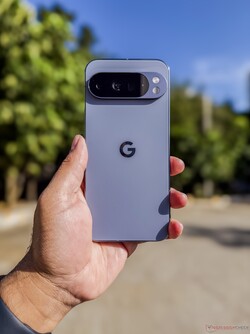
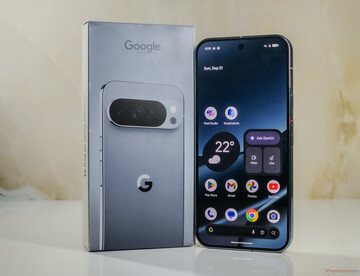

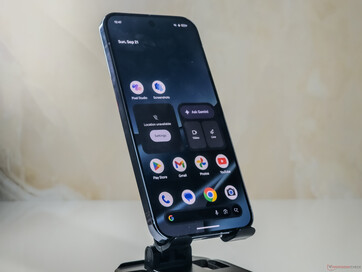
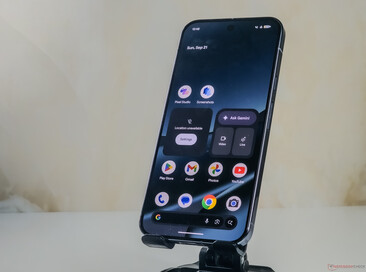

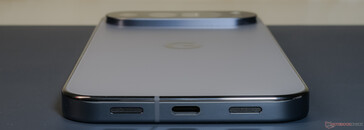
























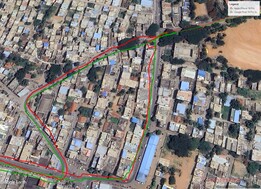

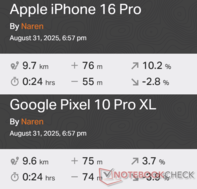

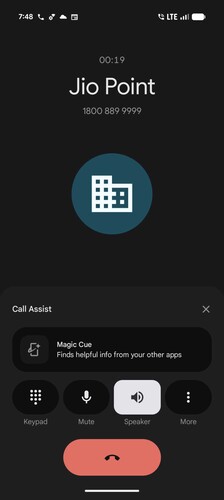
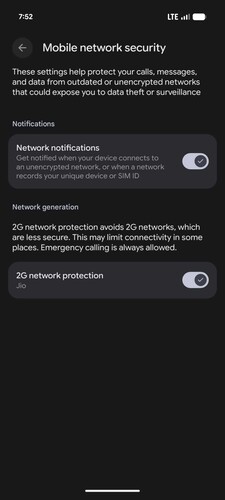





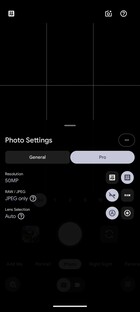

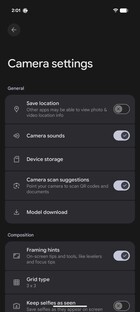

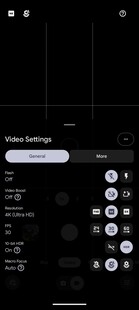

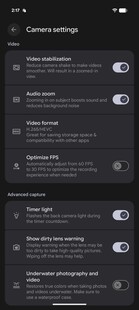
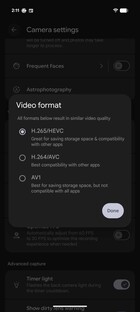

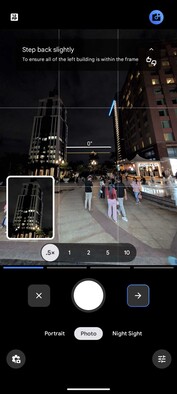
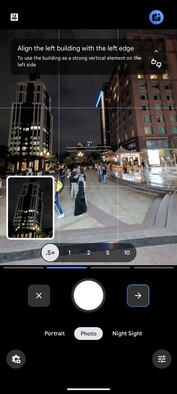
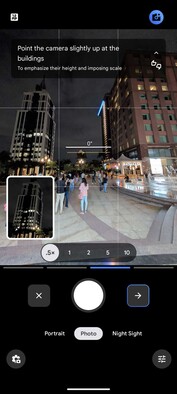


























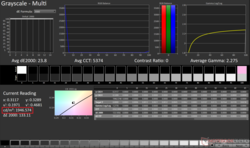

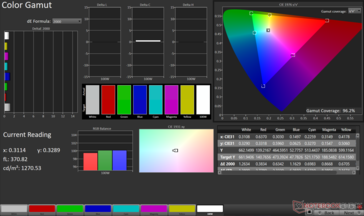
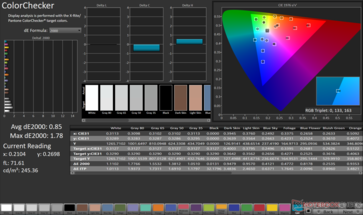



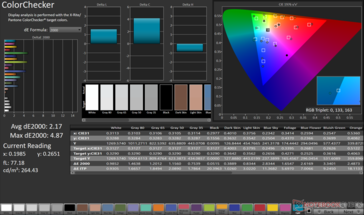

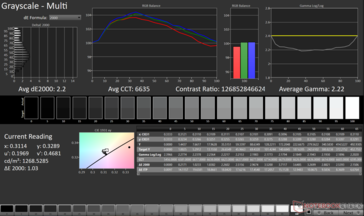
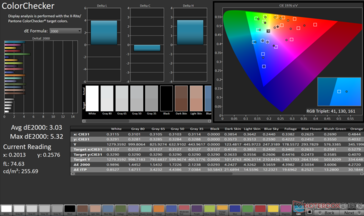









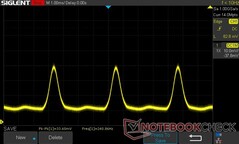


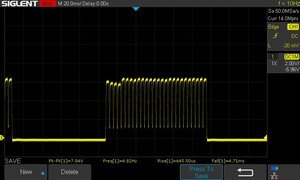
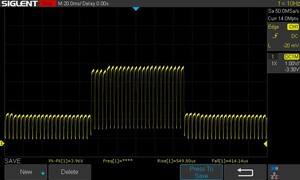







 Total Sustainability Score:
Total Sustainability Score: 









